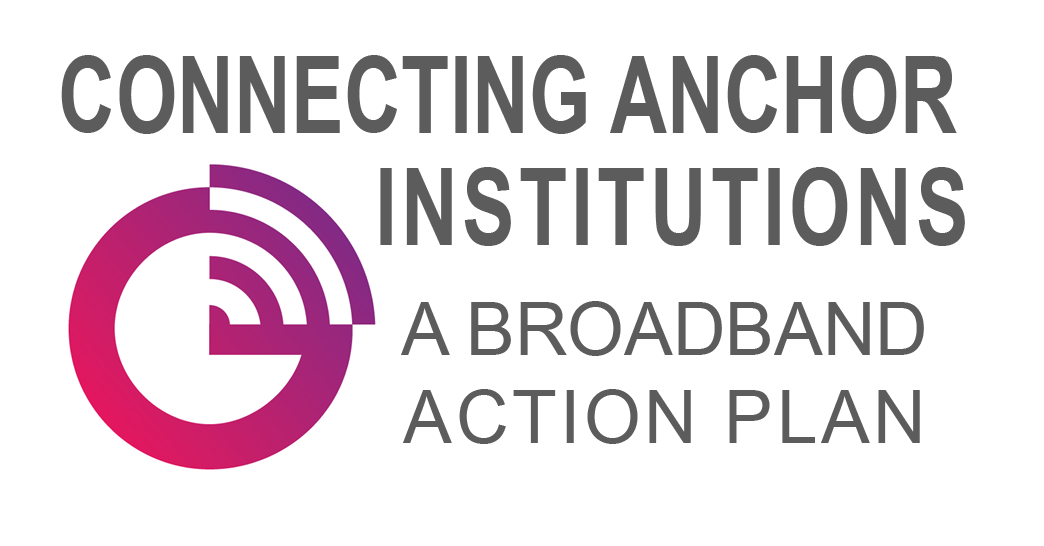Wi-Fi and Wireless Networking for Community Anchor Institutions
Summary
Because of surging demand for Wi-Fi connectivity, many CAIs do not have the capacity and coverage to offer enterprise-grade, ubiquitous Wi-Fi access. Emerging technologies can provide new kinds of wireless connectivity between buildings and to communities. Recommendations include continuing E-rate support for internal connections, making more unlicensed spectrum available, sharing CAI wireless networks with the surrounding community, and providing CAIs with technical advice to ensure they are using wireless most efficiently.
Read Full Policy PaperRecommendations for Action
To support robust, well-designed Wi-Fi and wireless broadband networks for community anchor institutions, federal policymakers can:
- Continue to provide E-rate funding that supports wireless networks and continue consulting with schools and libraries on what is working and what is not in terms of E-rate funding for Wi-Fi networks.
- Consider allowing E-rate-funded networks to provide off-hours access to local communities, e.g., through the use of white spaces and school buses with routers.
- Allocate more white space spectrum for unlicensed use by CAIs.
- Consider how privacy and security laws related to broadband networks (including Wi-Fi networks) impact CAIs, and ensure that these regulatory obligations are clear, purposeful, and not burdensome.
- Consider approving Globalstar’s proposed TLPS in a manner that does not create interference to other users and operates under the right conditions to serve the needs of anchor institutions and the public interest.
- Increase the amount of unlicensed spectrum available for Wi-Fi use (e.g., sharing and use of the 5.9 GHz band).
State policymakers can:
- Consult CAIs about their wireless networking needs. If the state is acting in a procurement role for CAI wireless networks, the state should work to provide detailed RFPs that include specifications and use cases.
- Help CAIs hire independent wireless consultants that can assist with needs assessment.
- Produce or assemble due diligence-related help documents for CAIs and local procurement offices.
- Ensure that state procurement procedures and telecom policy are up to date.
- Support schools and libraries in applying for E-rate and other funding sources.
- Offer state-level funding for CAI wireless networks when federal funding is not available.
- Offer the possibility of statewide, managed wireless contracts to CAIs as one way to reduce costs and offer equal quality access across the state. Contracting with a single company for managed wireless (versus allowing contracts with several different companies) can offer the benefit of aggregate, comparable data on CAI wireless networks across the state.
Local policymakers can:
- Work with local CAIs to understand the benefits of strong wireless infrastructure.
- Include CAIs in broadband planning.
- Encourage district decision makers working in a procurement role to consult CAIs about their broadband and wireless needs, and provide detailed RFPs that include specifications and use cases.
- Assist CAIs with due diligence when selecting technology partners.
- Help CAIs to find creative funding solutions for wireless networks, such as local corporate sponsors.
Examples/Case Studies
Additional Resources
- Pierce, Dennis, “A $5 billion bounty: How to use eRate support for Wi-Fi,” eSchoolNews, August 12, 2014. Background information on how changes to the E-rate program impact funding for wireless broadband networks for school and libraries. http://www.eschoolnews.com/2014/08/12/erate-for-wi-fi-435/
- Part 2 offers details on new E-rate support for managed wireless. http://www.eschoolnews.com/2014/08/19/managed-wi-fi-823/2/
- Leading a Digital Transformation: How to use E-rate and the Power of Digital to Transform Education, eSchoolNews Special Report, 2016. Practical advice on how institutions can use E-rate and other resources to building robust wireless networks, which support digital education. It details “Five Keys to Success” to consider when embarking on such an endeavor. http://www.cisco.com/c/dam/en_us/solutions/industries/docs/education/e-rate-white-paper.pdf
- The Internet of Things: How Robust Wi-Fi Opens a Door to Connected Possibilities, Education Networks of America (ENA) case study, 2015. How Paoli Community Schools in Indiana has been working to build strong Wi-Fi infrastructure, and the challenges and benefits related to doing so. http://www.ena.com/resources/internet-things-robust-wi-fi-opens-door-connected-possibilities/
- A second school-related case study, focusing on Ligonier Valley in Pennsylvania http://www.cisco.com/c/dam/en/us/products/collateral/wireless/c36_708084_ligonier_valley_cs_v1b.pdf
- Healthcare Giant Accelerates into Future of Wireless, Cisco case study, 2013. Houston Methodist and Wi-Fi networks in today’s hospitals. http://www.cisco.com/c/en/us/solutions/collateral/enterprise-networks/802-11ac-solution/case-study-c36-729476.html
- A second hospital case study looks at Miami Children’s Hospital. http://www.cisco.com/c/dam/en/us/products/collateral/wireless/aironet-3600-series/miami-childrens-hospital-voc-cs.pdf
- Siefer, Angela, Katherine Bates, Colin Rhinesmith, Libraries’ Increasing Role in Broadband Adoption, Benton Foundation, January 2016. Insights into how libraries help to bridge the digital divide and details on library wireless hotspot programs. https://www.benton.org/initiatives/libraries-broadband-adoption
About the Author
Amelia Bryne
Trained in cultural anthropology and new media, Amelia Bryne is co-Director of DeepTech.org, a research consultancy that focuses on the social and environmental impacts of information and communications technologies. She has worked with the American Library Association Office for Information Technology Policy, the University of Helsinki, the Social Science Research Council, the Community Wireless Infrastructure Research Project, byDesign eLab, and other public interest research projects and institutions. Her research has been published in journals such as Telematics & Informatics, Policy & Internet, and the Journal of Community Informatics.
Policy Papers
Latest Updates From Twitter
Action Plan Authors
Amelia Bryne
Kelleigh Cole
Joanne Hovis
Tom Koutsky
Blair Levin
Christine Mullins
Angela Siefer
Gina Spade
John Windhausen
Steering Committee
Larra Clark, American Library Association
Adrianne Furniss, Benton Foundation
Kevin Taglang, Benton Foundation
Bob Collie, ENA
Lil Kellogg, ENA
Rex Miller, ENA
Susannah Spellman, Internet2/USUCAN









 Download Full Action Plan
Download Full Action Plan